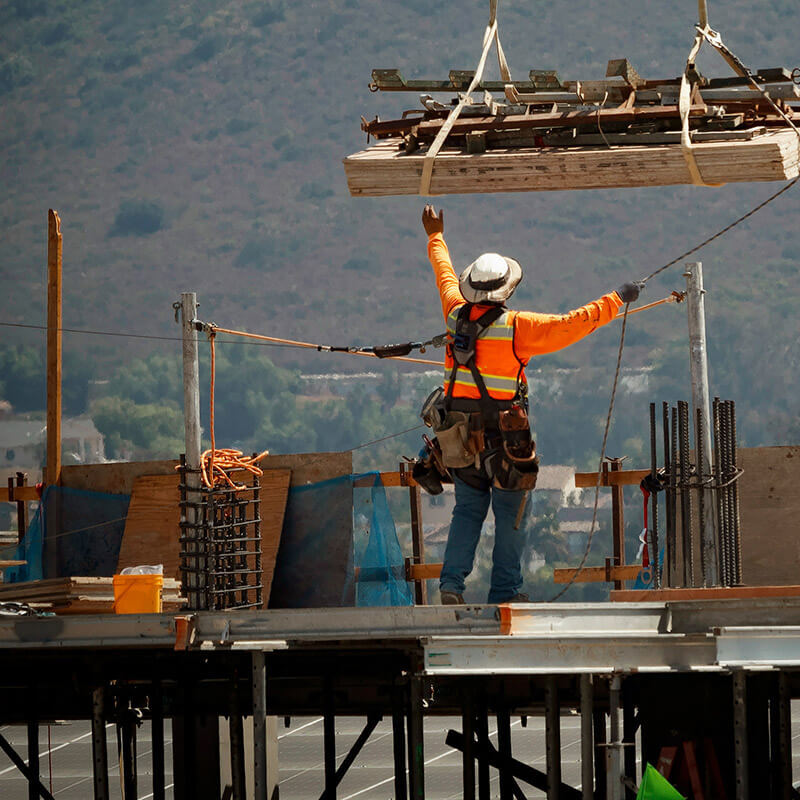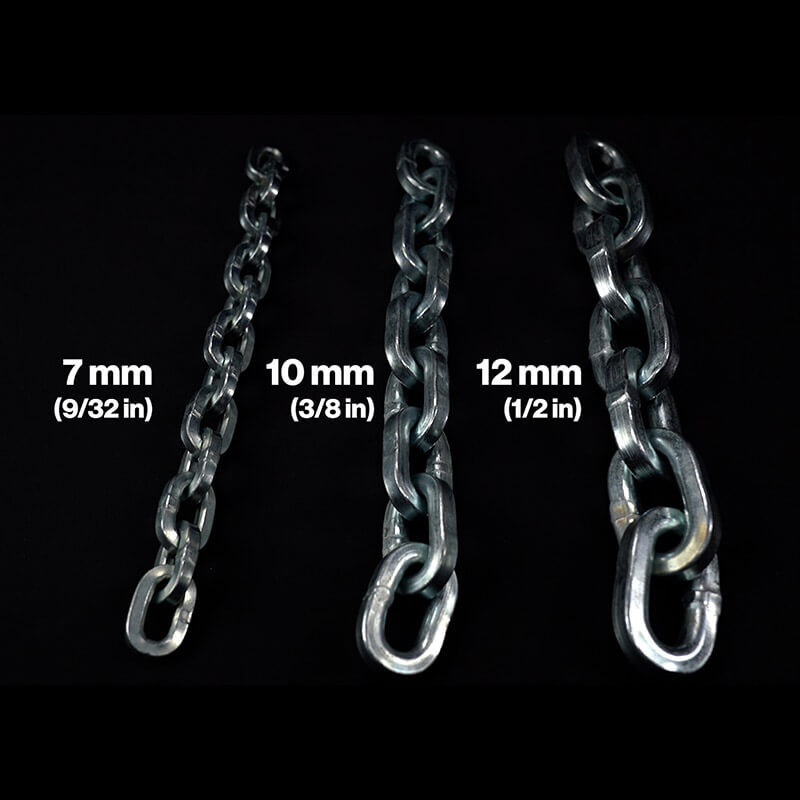What Are the 4 Basic Rules of Rigging?
In the realm of industrial operations, the process of rigging plays a critical role in the movement and installation of heavy machinery and equipment. Ensuring foundational knowledge and adherence to rigging safety rules is not just a best practice—it's a necessity. What are the 4 basic rules of rigging, one might ask? These cardinal tenets dictate the successful and safe execution of rigging tasks. They encompass having properly trained personnel, thoroughly checking equipment and environmental suitability, ensuring the balance and stability of the load, and employing effective communication through qualified spotters. Following these rigging principles not only enhances worker safety but also protects the integrity of the valuable loads being handled.
Incorporating rigging best practices into every aspect of lifting operations strengthens the overall safety culture within industrial sites. Mastery of rigging techniques is vital as it involves a combination of science, art, and skill. These techniques ensure the protection of all stakeholders and instill a sense of confidence in the rigging process. Therefore, a comprehensive understanding and strict adherence to these principles is paramount for the smooth and incident-free execution of rigging activities.
Key Takeaways
- Comprehending and applying the 4 basic rules of rigging is vital for industrial safety and efficiency.
- Properly trained and qualified personnel are indispensable for safe rigging operations
- Regular safety checks on equipment and environment are part of essential rigging safety rules.
- Maintaining balance and ensuring the stability of loads are central to rigging best practices.
- Qualified spotters and clear communication protocols are crucial for executing seamless rigging techniques.
- Adhering to established rigging principles minimizes risk and protects both people and property.
Understanding the Rigging Safety Landscape
Rigging safety is a cornerstone of industrial operations, where the precision of moving heavy machinery and loads is not just about efficiency, but more importantly, about the safety of the workforce and equipment. Adhering to rigorous rigging safety rules can significantly minimize the risk of workplace incidents.
The Importance of Rigging in Industrial Operations
The success of industrial activities hinges on the reliability of its rigging processes. Fostering an environment where rigging safety tips are followed and proper rigging procedures are implemented can translate to seamless operations and the preservation of life and machinery. Moreover, the intricate nature of these procedures demands that regulations are not only understood but meticulously observed.
Consequences of Inadequate Rigging Practices
The fallout from neglecting proper rigging practices can be catastrophic. The consequences range from property damage to severe injuries or, in the worst-case scenario, fatalities. Each incident that stems from inadequate rigging procedures shadows the industry's reputation and can lead to stringent legal accountability and financial losses.
Rigging Regulations and Best Practices
Within the framework of industrial lifting, rigging regulations serve as a blueprint for maintaining safety standards. Compliance with these regulations ensures that workers are protected and equipment is used within its operational capacity. Employing best practices goes beyond mere adherence to rules; it involves active engagement in continuously updating safety protocols and techniques, ensuring the application of the most current and effective approaches to rigging safety.
Ensuring Qualified Personnel and Training
An essential element in the realm of industrial rigging is ensuring that only properly certified and trained professionals are at the helm of operations. In alignment with strict rigging guidelines, it is imperative that each rigger's qualifications include specialized training and certification specific to the complex tasks they manage. This foundation of knowledge equips them with the foresight to identify and mitigate potential problems before they evolve into hazardous conditions.
The cultivation of a workforce adept in proper rigging procedures is not only a precept of workplace safety but also a keystone of rigging principles. Establishing a benchmark for personnel competence, these guidelines demand a standard of excellence that is maintained through continuous education and practice. This investment in human capital is as crucial as the mechanical tools used in rigging itself.
- Verify that every rigger has the necessary certification and training for the tasks at hand.
- Ensure regular upskilling and refresher courses are available to keep riggers abreast of the latest rigging principles and technologies.
- Implement mentorship programs where seasoned riggers can impart essential skills and proper rigging procedures to less experienced team members.
- Maintain meticulous records of training and certifications to foster a culture of accountability and safety.
Through diligent adherence to these established standards, the industry safeguards not just the personnel and the loads they carry, but also the broader integrity of its operations. When it comes to rigging, the strength of the materials is matched only by the strength of the people who rig them.
What Are the 4 Basic Rules of Rigging?
In the realm of industrial operations, adherence to the fundamental rigging safety tips is not just encouraged; it is a requisite for the safeguarding of lives and property. The cornerstone of such practices is the implementation of the four basic rules of rigging. Each rule is a spoke in the wheel of rigging best practices and is essential for a seamless and risk-averse operation.
Qualified Workers for Rigging Tasks
The backbone of any successful rigging operation lies in the capabilities of its workers. Achieving rigging excellence starts with ensuring that individuals tasked with rigging duties are not only certified but also skilled in employing various rigging techniques. It is imperative that these professionals are trained to identify potential hazards and execute projects with precision, complying with all safety procedures.
Equipment and Environmental Safety Checks
Before the lift, a rigorous inspection is paramount. Evaluating the condition of the equipment and taking stock of the surrounding environmental conditions are critical components of rigging safety. These checks involve close scrutiny of machinery to confirm operability and a keen assessment of weather elements that may affect the task at hand, embodying one of the pivotal rigging best practices.
Balance and Stability of Loads
One of the hallmark rigging techniques is the meticulous balance and stability of loads. This rule is engrained in rigging operations to avert the dangers of unbalanced loads, which could result in tipping, sliding, or unintentional movement. Establishing balance guarantees that the load's center of gravity is properly aligned, thus promoting a safer, more efficient lift.
Spotting and Communication Protocols
Clear and effective communication is a pillar of rigging safety. The role of a qualified spotter is indispensable in managing this aspect. These individuals must be well-versed in hand signaling and possess the expertise to direct operators, ensuring that all movements are executed with precision. With their vigilant oversight, spotters are crucial facilitators in maintaining situational awareness and guiding loads to their destinations safely.
Applying Rigging Techniques and Procedures
Expert riggers know that employing the right rigging techniques is critical for ensuring safety and efficiency on the job. Whether preparing to hoist construction materials or securing heavy machinery for transportation, understanding and following rigging safety rules are paramount. The process of selecting the appropriate rigging gear, recognizing and mitigating hazards, maintaining rigging equipment, and executing safe operation and control of loads are indispensable to a successful rigging operation.
Selecting the Appropriate Rigging Gear
Selecting the correct type of sling—whether it be chain, wire rope, or synthetic—is a decision that significantly impacts rigging safety. Factors such as load weight, balance, load content, and the environment are taken into account to ensure the right choice is made. Using rigging techniques that adhere to established safety standards, riggers must avoid shortcuts that compromise load security, such as knotting slings or exceeding load limits.
Recognizing and Mitigating Hazards
Identifying potential hazards is a continuous necessity. Rigging professionals must be vigilant in assessing risks like proximity to power lines or environmental conditions that could affect the stability of the load. Implementing mitigation strategies such as barricading unsafe areas and using spotters to assist with the control of loads is imperative to maintain a safe rigging environment.
Maintaining and Inspecting Equipment
Rigging equipment must be scrupulously inspected before every use to identify wear, corrosion, or defects that could lead to failure. Upkeep of hardware, including sheaves, shackles, and hoist rings, is also part of maintaining rigging equipment. Timely repair or replacement of any compromised elements is a necessary procedure aligned with rigging safety rules.
Safe Operation and Control of Loads
- Stay informed of the load's weight and rigging equipment's capacity.
- Use taglines to stabilize and guide the load where necessary.
- Employ hand signals and clear communication throughout the operation.
- Ensure all personnel are at a safe distance during the lifting and moving process.
The art of rigging rests on an unwavering commitment to safety and precision. Effective control of loads, competency in rigging techniques, proper gear selection, and regular equipment maintenance collaboratively create the cornerstone of rigging best practices, safeguarding lives and infrastructure.
Conclusion
In the realm of industrial activities where precision and dependability are non-negotiable, adherence to the foundational rigging principles is not just best practice – it's imperative. By embodying these core standards, we cement the importance of safety and efficiency in all lifting operations. It becomes clear that having adept, qualified workers at the helm, combined with strict compliance with rigging safety rules, is key to both preventing accidents and enhancing operational efficacy.
The integrity of rigging practices hinges on the prevalent question, what are the 4 basic rules of rigging? These encompass the essential checklist for any successful lift: qualifying the skills and training of personnel, verifying equipment and environmental safety, achieving precise balance of loads, and ensuring robust communication processes are in play. It is this strategic adherence to rigging safety tips that empowers organizations to operate above the industry's safety threshold, thereby reducing the potential for workplace accidents, equipment damage, and personal injury.
Ultimately, by employing the recommended safety tips and rigorously implementing these rules, the industry can foster a secure and reliable rigging environment. The consequence of such diligence is a reduced rate of accidents and injuries, coupled with the protection of valuable property. In essence, when rigging operations are performed with a conscientious adherence to established protocol, everyone from the riggers to the surrounding workforce benefits from the cultivation of a safety-first culture in heavy-lifting procedures.
If you are in need of rigging supplies or equipment we have everything you need in stock and ready to ship.
What Is a Kernmantle Rope Used For?
Nov 21st 2025
What Is a Fall Protection Harness?
Nov 14th 2025
What are the four components of a PFAS?
Nov 7th 2025
Is Palmer Safety OSHA Compliant?
Nov 3rd 2025
What’s the Hardest Chain to Cut?
Oct 20th 2025
What are the most common tools used in rigging?
Oct 13th 2025
What Is the Strongest Security Chain?
Oct 7th 2025
Are Pewag Chains Good?
Oct 3rd 2025
What Are DuckBill Anchors Used For?
Sep 26th 2025










